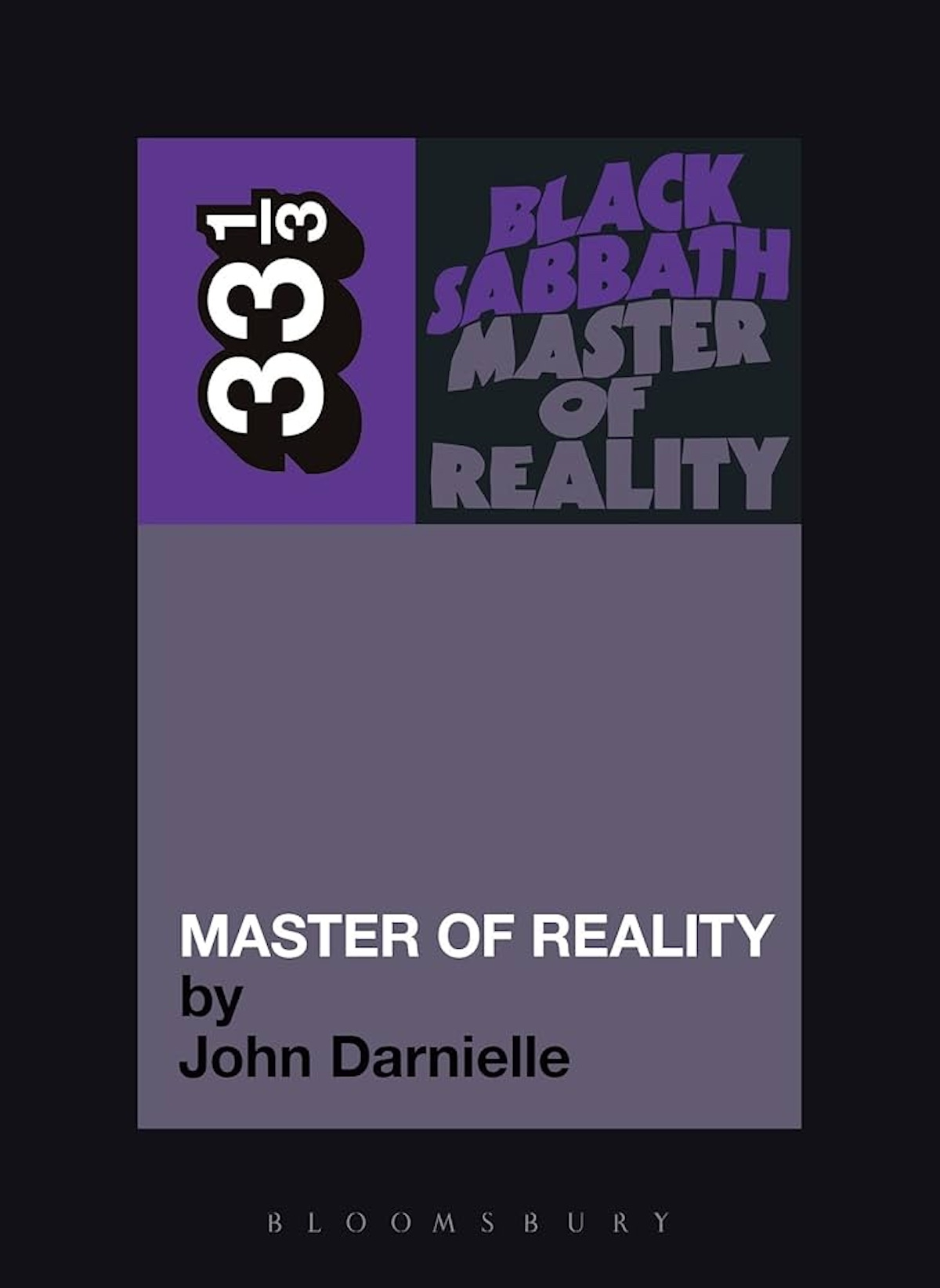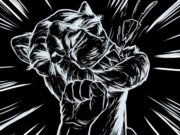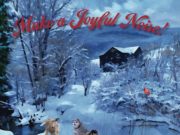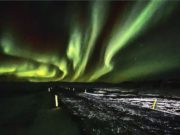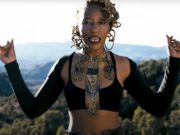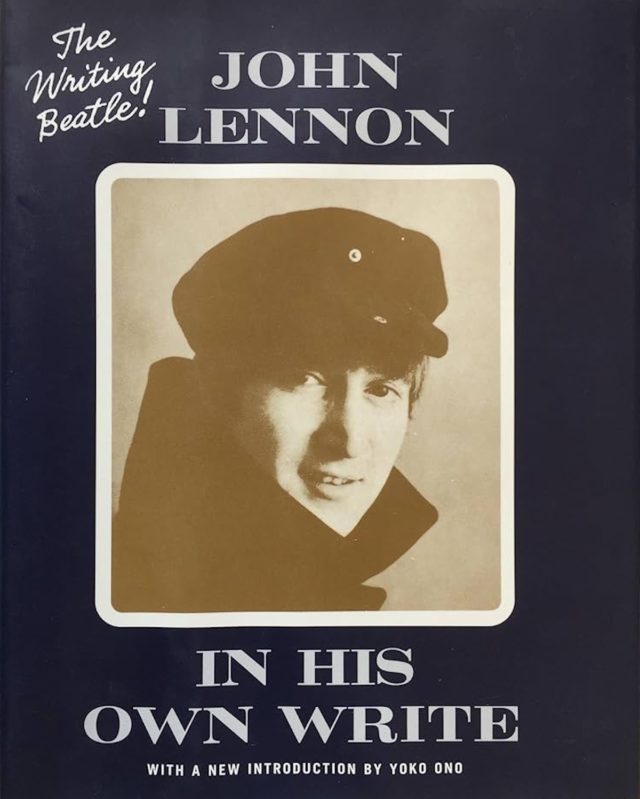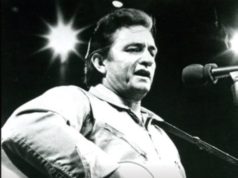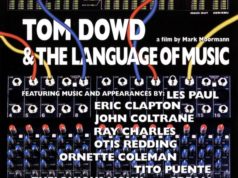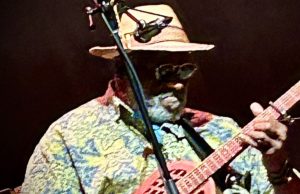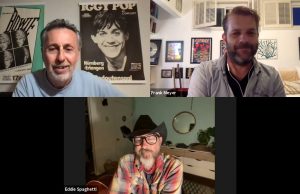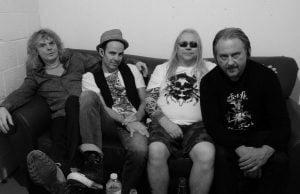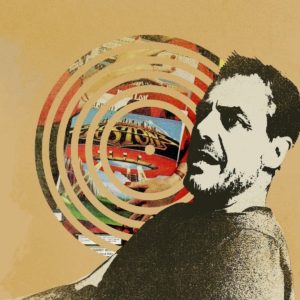 If — like me — you’re a voracious devourer of music biographies, you know the artist’s involvement can just as easily make the book boring, as it can make it more revealing. Personally, I prefer to pair autobiographies and sanctioned biographies with unofficial biographies — the truth is usually somewhere between.
If — like me — you’re a voracious devourer of music biographies, you know the artist’s involvement can just as easily make the book boring, as it can make it more revealing. Personally, I prefer to pair autobiographies and sanctioned biographies with unofficial biographies — the truth is usually somewhere between.
Besides, most people who write first-person accounts of the music biz are not really writers, and it shows. While Black Sabbath bassist Geezer Butler’s book was interesting at times, it was so matter-of-fact that it was almost surreal at times, given he’s often describing scenes of coke-fuelled craziness. Similarly, Patti Boyd’s account of her life with George Harrison and Eric Clapton is dull. Nick Mason’s book about Pink Floyd is even more so.
Their unique perspective on the subject matter means they get away with sub-par writing. Except Neil Young. He doesn’t get a pass for Waging Heavy Peace. Not only is it boring, but it is self-indulgent, somehow off-topic, and generally awful. There are some exceptions, of course — like Geddy Lee’s My Effin’ Life and Life by Keith Richards. Excellent reads. One Train Later by Andy Summers is fantastic as well.
Indeed, some of these musicians can write — not just music and lyrics, but prose. Novels, cookbooks, self-help guides and nonfiction that’s not solely about them. So, I thought I’d hunt down a bunch of musicians who are also authors. The one rule is — it has to be any book besides a biography of themself or their band. Here goes:
I think the first musician I knew of who wrote books was John Lennon. I have both the ones he wrote while he was still in The Beatles — In His Own Write (1964) and A Spaniard In The Works (1965), as well as the posthumously published one, Skywriting By Word Of Mouth (1986). Lennon’s books are fun, silly and involve his famous nonsensical wordplay, and many of his own drawings.
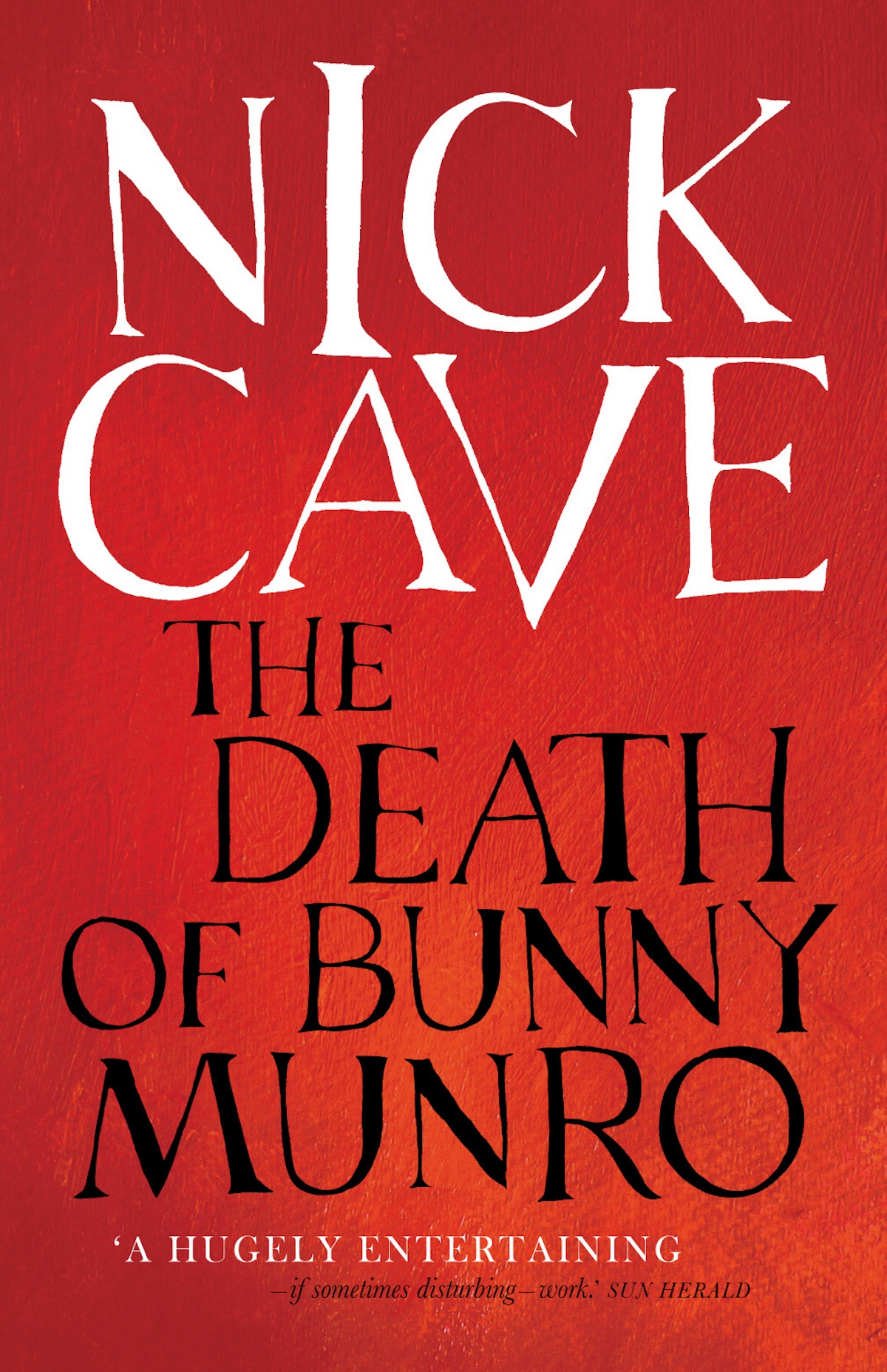 Nick Cave has a bunch of books. There are the two King Ink books, which are essentially a collection of lyrics, poems, essays and plays. His first proper novel, And The Ass Saw The Angel, came out in 1989. It’s a dark tale of a mute who exacts revenge on those who have made him suffer. Cave followed this up with a second novel in 2009 called The Death of Bunny Monroe. This wild road-trip story involves the middle-aged title character, who is a womanizing door-to-door salesman in Brighton. He hits the road with his son, while a serial killer is at work. Cave and singer-songwriter Lydia Lunch published an adult comic book called AS-FIX-E-8. In 2015 he put out The Sick Bag Song, and Faith, Hope, and Carnage in 2022, which is a collection of phone conversations transcripts during the pandemic.
Nick Cave has a bunch of books. There are the two King Ink books, which are essentially a collection of lyrics, poems, essays and plays. His first proper novel, And The Ass Saw The Angel, came out in 1989. It’s a dark tale of a mute who exacts revenge on those who have made him suffer. Cave followed this up with a second novel in 2009 called The Death of Bunny Monroe. This wild road-trip story involves the middle-aged title character, who is a womanizing door-to-door salesman in Brighton. He hits the road with his son, while a serial killer is at work. Cave and singer-songwriter Lydia Lunch published an adult comic book called AS-FIX-E-8. In 2015 he put out The Sick Bag Song, and Faith, Hope, and Carnage in 2022, which is a collection of phone conversations transcripts during the pandemic.
When Lennon was putting out his nonsense prose, Bob Dylan was working away on a prose-poetry book of his own, but Tarantula didn’t come out until 1971.
Public Enemy rapper Chuck D put out a brilliant book about hip-hop, its origins, and both its role in activism towards institutional racism as well as how those things fuel it. Written with youth and culture educator Jusef Jah, it came out in 1997.
Courtney Love did a manga book with Stu Levy called Princess AI. In Japanese, AI means love. In the story, Princess is a rock star who falls in love with another musician named Kent. But, it’s totally not an autobiography. Whatever. It counts.
The same year Gil Scott-Heron released his debut album in 1970, he published his murder mystery novel The Vulture, written when he was just 19 years old.
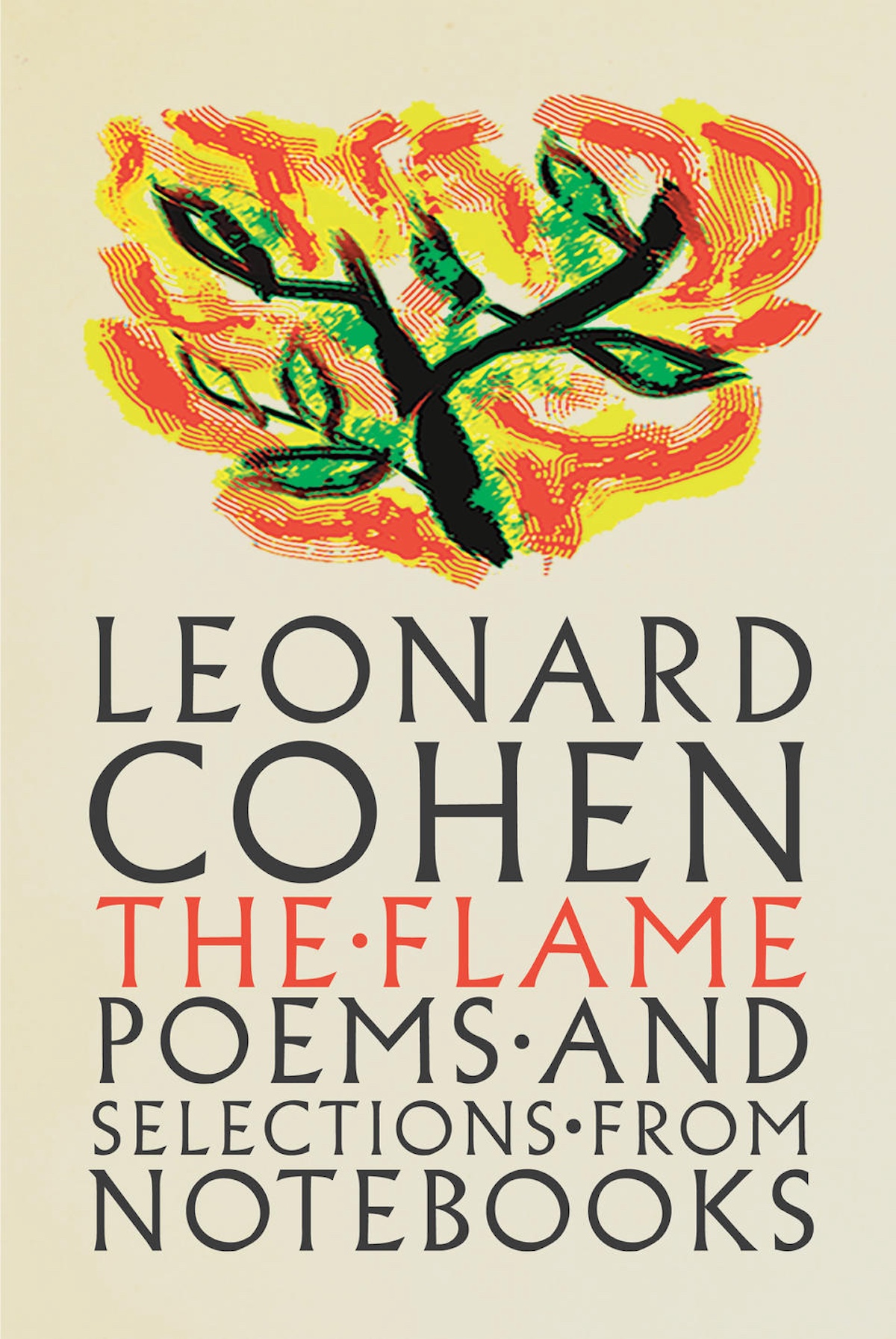 Leonard Cohen penned 12 books in his lifetime and released 10 — which probably would come as no surprise to his profs at McGill in the ’50s, when he was a debating team champ and won an esteemed literary award. He got poems published in magazines ahead of his first book of poetry, 1956’s Let Us Compare Mythologies. He followed this with another in 1961 — The Spice-Box of Earth. His first novel, The Favourite Game, was published in 1963, followed by another book of poetry — Flowers For Hitler — in 1964. His 1966 novel Beautiful Losers is perhaps his best-known work. That same year he published yet another book of poetry called Parasites of Heaven. He quit publishing when his music career took off in the late ’60s and 1970s, but in 1978 he returned with Death Of A Ladies Man — a book of poems which shares a title with his fifth album the year before (produced by Phil Spector). Six years later he published another, Book Of Mercy, which contains Hebrew Bible-influenced prose-poems Cohen referred to as prayers. There was a book of song lyrics and poems in 1993, called Stranger Music and Book Of Longing in 2006. A novella and short stories, written during the late 50s, was published posthumously as A Ballet of Lepers in 2022 and the book of poems he was working on before he died — The Flame — was also released posthumously in 2018.
Leonard Cohen penned 12 books in his lifetime and released 10 — which probably would come as no surprise to his profs at McGill in the ’50s, when he was a debating team champ and won an esteemed literary award. He got poems published in magazines ahead of his first book of poetry, 1956’s Let Us Compare Mythologies. He followed this with another in 1961 — The Spice-Box of Earth. His first novel, The Favourite Game, was published in 1963, followed by another book of poetry — Flowers For Hitler — in 1964. His 1966 novel Beautiful Losers is perhaps his best-known work. That same year he published yet another book of poetry called Parasites of Heaven. He quit publishing when his music career took off in the late ’60s and 1970s, but in 1978 he returned with Death Of A Ladies Man — a book of poems which shares a title with his fifth album the year before (produced by Phil Spector). Six years later he published another, Book Of Mercy, which contains Hebrew Bible-influenced prose-poems Cohen referred to as prayers. There was a book of song lyrics and poems in 1993, called Stranger Music and Book Of Longing in 2006. A novella and short stories, written during the late 50s, was published posthumously as A Ballet of Lepers in 2022 and the book of poems he was working on before he died — The Flame — was also released posthumously in 2018.
Even more prolific than Cohen: Satirical country singer-songwriter Kinky Friedman, who published more than two dozen books — 18 murder mysteries starring himself as a hard-boiled detective, a couple of other fiction works, and a handful of non-fiction titles about Texas, politics and other topics.
After Pete Quaife quit The Kinks, he moved to Canada and became a graphic artist. He also suffered renal failure, prompting him to write The Lighter Side of Dialysis, a book of cartoons, in 2004 — and The Lighter Side of Dialysis Volume II in 2005.
Doors keyboardist Ray Manzarek published The Poet In Exile in 2001. It’s a work of fiction inspired by Jim Morrison. The plot centres on “Roy” — a longtime musical collaborator with the poet/lead singer of the world’s most famous band, who receives a postcard which leads him to question whether or not “the poet” is really buried in Paris. Hmmm.
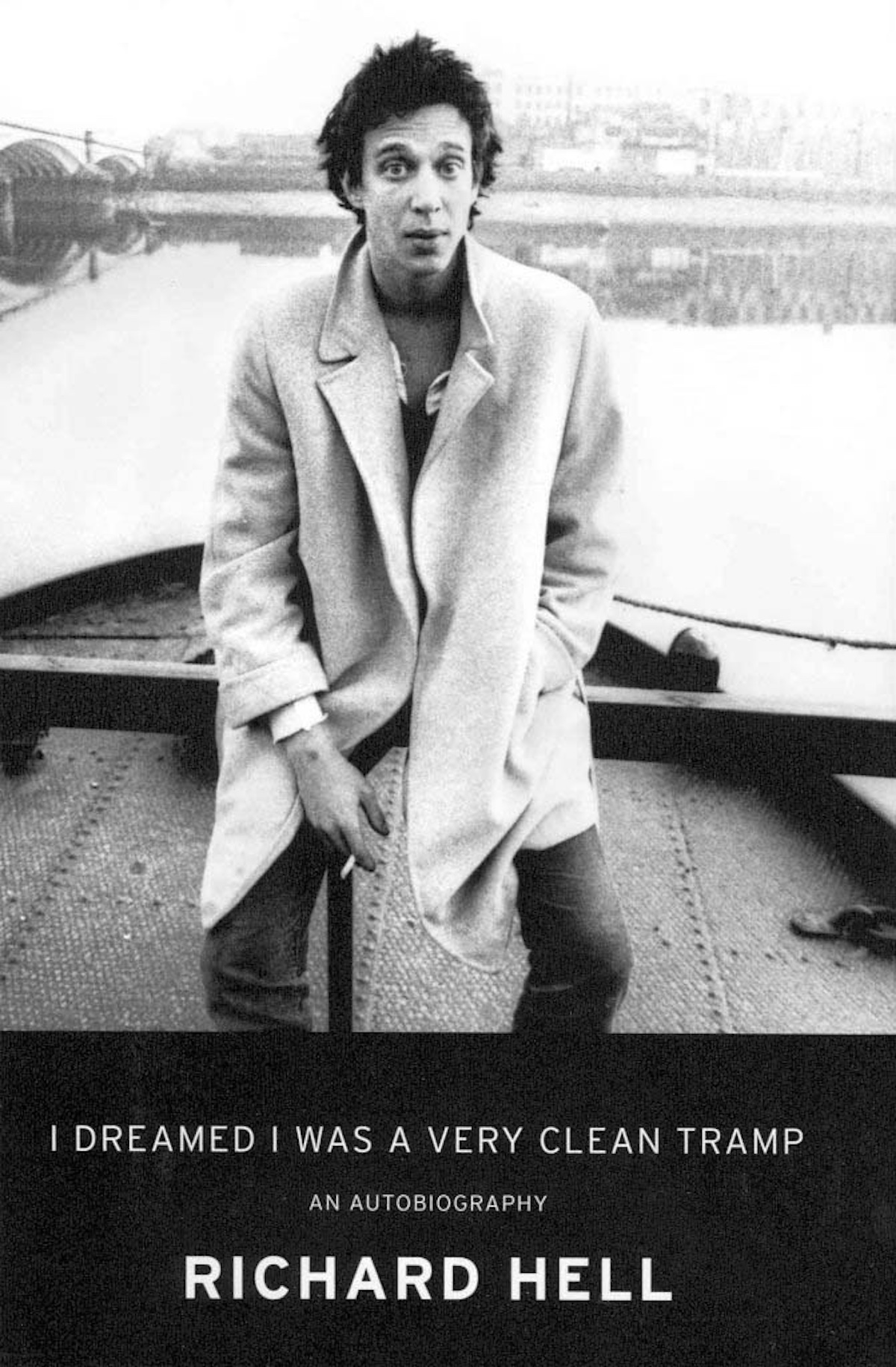 Before he was a founding member of Television, The Heartbreakers or the bass player and lead singer of The Voidoids, Richard Hell was Richard Meyers. He penned a novella in 1973 called The Voidoid. It wasn’t published until 1993. His early poems were published later as well, as I Was A Spiral On the Floor in 1988, and Across The Years in 1992. Before all these, a compendium of his punk-era journals was published in 1990 as Artifact: Notebooks From Hell. His first full-length novel, Go Now, was published in 1996. It’s not an autobiography, but does draw entirely from his own experiences. He followed this up with another collection of short works called Hot And Cold, in 2001. Then came another novel, Godlike, in 2005. The same year he did a collaborative book of poetry with poet David Shapiro called Rabbit Duck. Shapiro died in May 2024. Another collab — Psychopts — followed in 2008, which he did with artist Christopher Wool. And then two more books — Disgusting (2010) and I Dreamed I Was A Very Clean Tramp (2013). For years, Hell has written a music column for Colorado alt mag Toilet Paper. A collection of those was published in 2007. A collection of his non-fiction, called Massive Pissed Love, was also published in 2015.
Before he was a founding member of Television, The Heartbreakers or the bass player and lead singer of The Voidoids, Richard Hell was Richard Meyers. He penned a novella in 1973 called The Voidoid. It wasn’t published until 1993. His early poems were published later as well, as I Was A Spiral On the Floor in 1988, and Across The Years in 1992. Before all these, a compendium of his punk-era journals was published in 1990 as Artifact: Notebooks From Hell. His first full-length novel, Go Now, was published in 1996. It’s not an autobiography, but does draw entirely from his own experiences. He followed this up with another collection of short works called Hot And Cold, in 2001. Then came another novel, Godlike, in 2005. The same year he did a collaborative book of poetry with poet David Shapiro called Rabbit Duck. Shapiro died in May 2024. Another collab — Psychopts — followed in 2008, which he did with artist Christopher Wool. And then two more books — Disgusting (2010) and I Dreamed I Was A Very Clean Tramp (2013). For years, Hell has written a music column for Colorado alt mag Toilet Paper. A collection of those was published in 2007. A collection of his non-fiction, called Massive Pissed Love, was also published in 2015.
Jimmy Buffett was another prolific author. Three of his books were best-sellers — the short-story collection Tales From Margaritaville (1989), the novel Where Is Joe Merchant? (1992), and his 1998 autobiography A Pirate Looks At 50. We won’t count that, but we will count the two children’s books he wrote with his daughter Savannah — The Jolly Mon (1988) and Trouble Dolls (1991). Buffet wrote another novel in 2004 called A Salty Piece Of Land and his last book was 2008’s Swine Not?
From margaritas to pina coladas. Rupert Holmes is the guy who wrote and had a hit with Escape (The Pina Colada Song), but it turns out he likes writing books along with getting caught in the rain. He’s written seven titles. His most famous book is likely his debut novel — 2003’s Where The Truth Lies, which has since been adapted into a major motion picture by Atom Egoyan.
Stephin Merritt of The Magnetic Fields wrote a Scrabble help book — of sorts. There are 101 two-letter words, which Scrabble players try to memorize. Merritt has written short poems for each one.
Not only is Bruce Dickinson the multi-octave lead singer of Iron Maiden, and a legit commercial pilot, he’s also an author. He published a whole series of stories about his semi-transvestite character Lord Iffy Boatrace. The first — The Adventures of Lord Iffy Boatrace — came in 1990 and makes fun of the fetishes of the British upper class. He followed it up with a sequel, The Missionary Position, in 1992 which takes aim at televangelists.
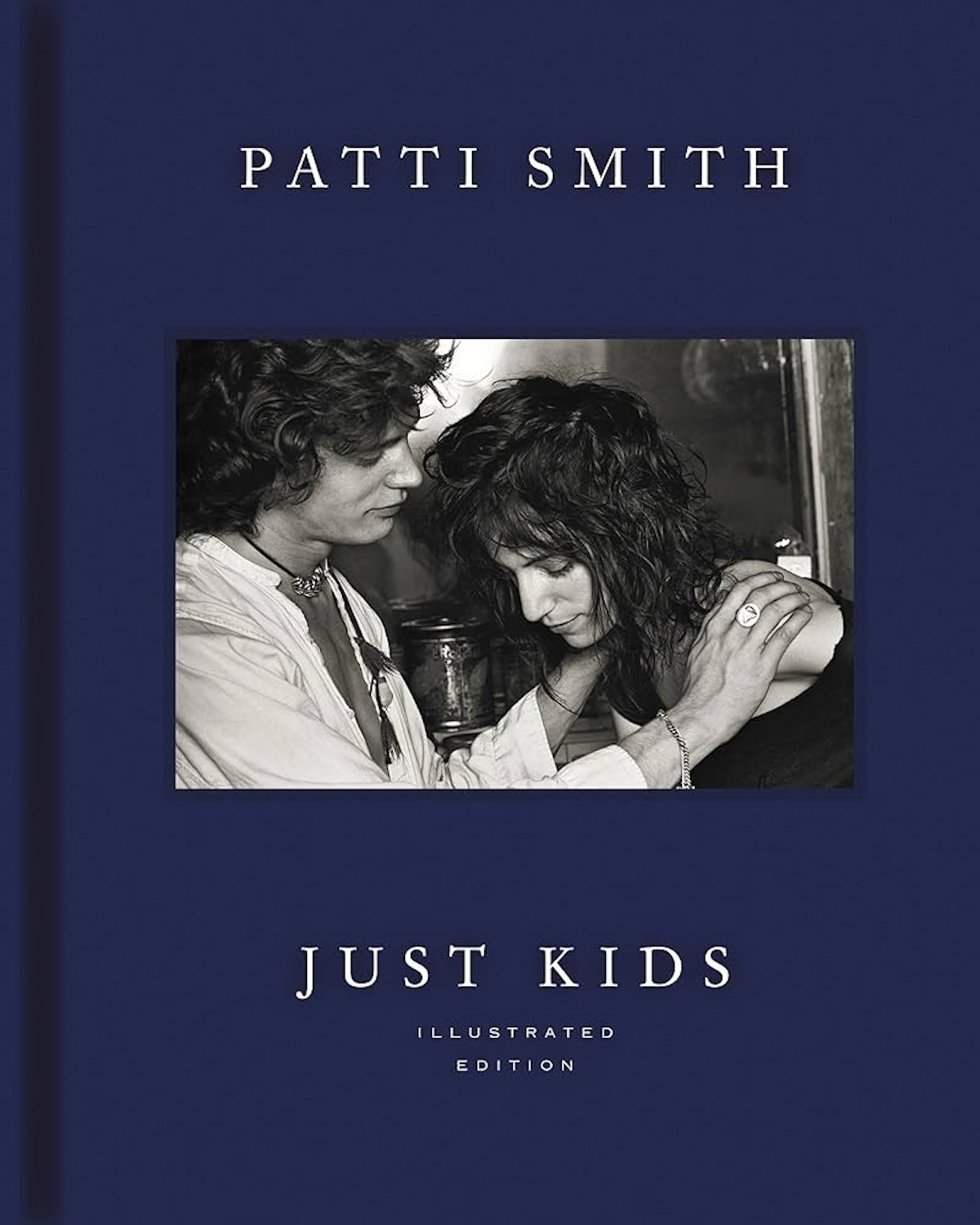 In 2008, Patti Smith published a book of her Polaroid photographs, called Land 250. She has nearly 30 published books. It started when she co-wrote the play Cowboy Mouth with Sam Shepard in 1971. There are a series of seven published poems and poetry books through the late ’70s, followed by four more in the ’90s. In 2003 she put out a book of her artwork called Strange Messenger and two more poetry books. Her memoir, Just Kids, was published in 2010, another memoir called M Train in 2015, as well as seven additional books including one about why she writes, an illustrated version of Just Kids, and more poetry collections.
In 2008, Patti Smith published a book of her Polaroid photographs, called Land 250. She has nearly 30 published books. It started when she co-wrote the play Cowboy Mouth with Sam Shepard in 1971. There are a series of seven published poems and poetry books through the late ’70s, followed by four more in the ’90s. In 2003 she put out a book of her artwork called Strange Messenger and two more poetry books. Her memoir, Just Kids, was published in 2010, another memoir called M Train in 2015, as well as seven additional books including one about why she writes, an illustrated version of Just Kids, and more poetry collections.
Julie Andrews has published 13 books since a botched surgery destroyed her singing voice in 1997. She began with three memoirs and then wrote nearly a dozen children’s books — Little Bo: The Story of Bonnie Boadicea (series beginning in 1999), Dumpy The Dumptruck (2000), Simeon’s Gift (2003), Dragon: Hound Of Honor (2005), The Great American Mousical (2006), Thanks To You: Wisdom From Mother And Child (2007), Julie Andrews’ Collection of Poems, Songs, and Lullabies (2009), and A Very Fairy Princess (2010). Andrews began writing in the 1970s. Her first book, Mandy, was published in 1971. It’s the story of a little girl who escapes an orphanage and finds a deserted cottage. Her followup, 1974’s The Last of the Really Great Whangdoodles, is the story of three siblings who meet Prof. Savant, who trains them to go to Whangdoodleland — which can only be reached via the imagination.
I first knew of Shel Silverstein as the creator of my favourite poetry books when I was a kid — Where The Sidewalk Ends and A Light In The Attic are both incredible, and beautifully illustrated. But Silverstein first used his gift for poetry to write songs. He penned both A Boy Named Sue for Johnny Cash and The Cover Of Rolling Stone for Dr. Hook.
The Decemberists frontman Colin Meloy has written a series of children’s books, illustrated by his wife Carson Ellis (who does Decemberists album covers). The series is called The Wildwood Chronicles.
Madonna has her 1992 coffee table book Sex, but she also released a children’s book in 2003 called The English Roses. It’s a sweet story about four young girls who are jealous of another girl named Binah, who they think is entitled — only to discover she is lonely. The picture book was translated into dozens of languages and spawned seven sequel “chapters.”
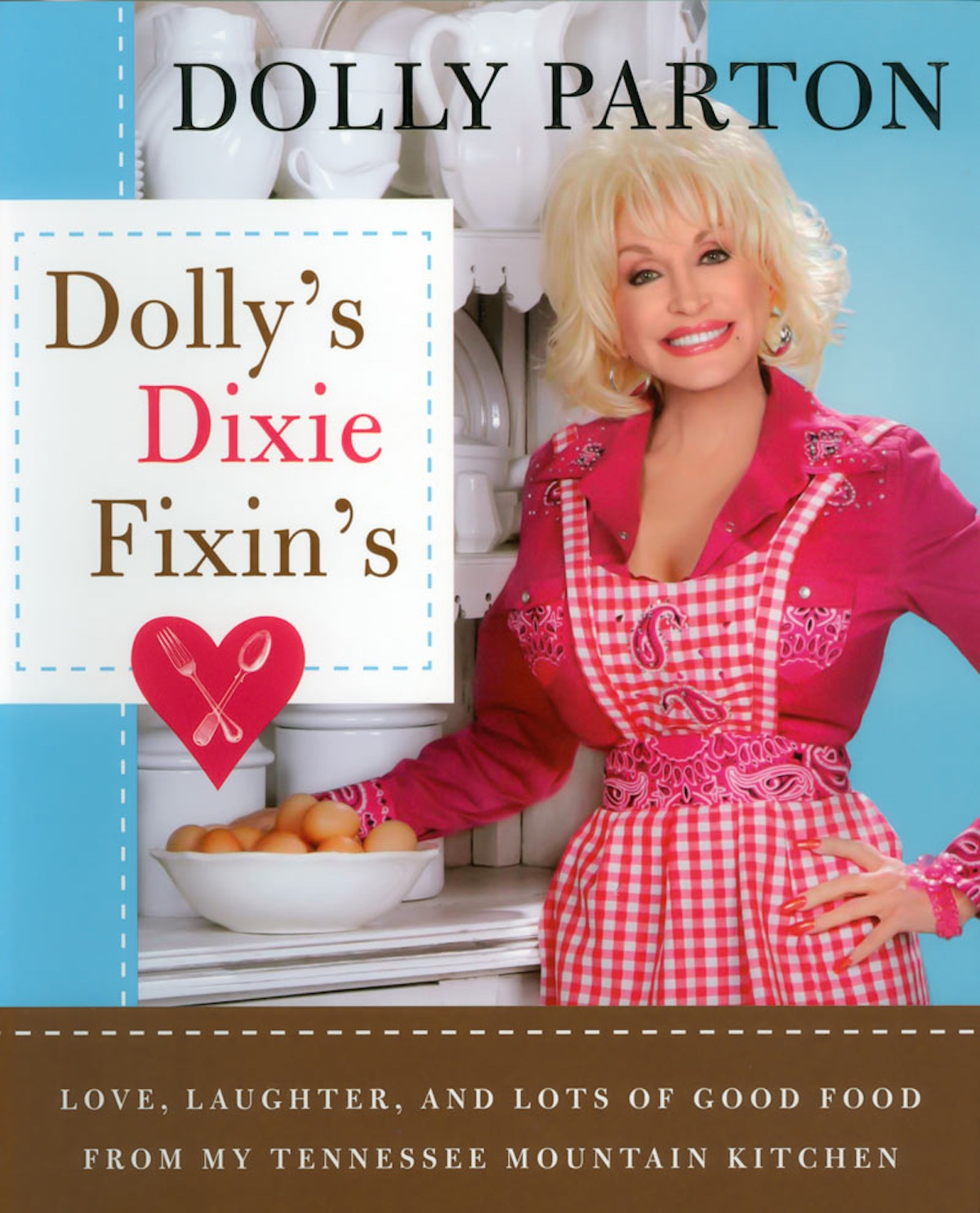 Is there anything Dolly Parton can’t do? Not only has she written heaps of hits, hundreds of songs, starred in films and television, but she has also been a prolific producer of published works. Her first was a book of poetry and lyrics called Just The Way I Am (1979). She didn’t do another until her memoir — My Life and Other Unfinished Business (1994) — but then she followed up with some kids’ books. The first of those was Coat Of Many Colors (1996). Then came Dolly’s Dixie Fixin’s: Love, Laughter and Lots of Good Food (2006), I Am A Rainbow (2009), Dream More: Celebrate The Dreamer In You (2012), Run Rose Run (2022), Billy The Kid Makes It Big (2023) and Billy The Kid Comes Home For Christmas (2024). She also has another memoir, a book of lyrics and another cookbook, called Good Lookin’ Cookin’ — A Year In Meals (2024).
Is there anything Dolly Parton can’t do? Not only has she written heaps of hits, hundreds of songs, starred in films and television, but she has also been a prolific producer of published works. Her first was a book of poetry and lyrics called Just The Way I Am (1979). She didn’t do another until her memoir — My Life and Other Unfinished Business (1994) — but then she followed up with some kids’ books. The first of those was Coat Of Many Colors (1996). Then came Dolly’s Dixie Fixin’s: Love, Laughter and Lots of Good Food (2006), I Am A Rainbow (2009), Dream More: Celebrate The Dreamer In You (2012), Run Rose Run (2022), Billy The Kid Makes It Big (2023) and Billy The Kid Comes Home For Christmas (2024). She also has another memoir, a book of lyrics and another cookbook, called Good Lookin’ Cookin’ — A Year In Meals (2024).
Twenty years after he made the animated short film, Rupert And The Frog Song, Paul McCartney got in on the kid book action in 2004 with an anti-development book called High In The Clouds, about a squirrel whose mom got killed by a bulldozer. Would make a pretty sad fourth verse of Eleanor Rigby.
Fall Out Boy founder and bassist Pete Wentz wrote a proper novel. Gray (2013) is a dark, stream-of-consciousness, first-person story of a self-obsessed rock star, surrounded by groupies and industry people, warped by drugs and constantly pining for his girlfriend.
The rapper Logic put out his debut novel in 2019 under his real name, Bobby Hall. Supermarket became a best-seller and has a pretty captivating synopsis: “Flynn is stuck — depressed, recently dumped, and living at his mom’s house. The supermarket was supposed to change all that. An ordinary job and a steady check. Work isn’t work when it’s saving you from yourself. But things aren’t quite as they seem in these aisles. Arriving to work one day to a crime scene, Flynn’s world collapses as the secrets of his tortured mind are revealed. And Flynn doesn’t want to go looking for answers at the supermarket. Because something there seems to be looking for him. A darkly funny psychological thriller, Supermarket is a gripping exploration into madness and creativity.” I’m down.
I’ve seen Woody Guthrie’s book House Of Earth described as a “hillbilly Finnegan’s Wake.” Guthrie wrote the novel in 1947, but it wasn’t discovered until the 2010s and published in 2012 by Johnny Depp. It did not receive much editing and is pretty long and tedious. It centres around a young couple who dream about building an adobe house — a symbol of a better life, in the midst of a corrupt world.
Mountain Goats founder John Darnielle has written three novels and a novella (about Black Sabbath). That novella, Black Sabbath: Master of Reality, was part of the 33 1/3 series of non-fiction books about the making of classic albums. Instead of that, Darnielle wrote a short work of fiction about a young man in a psychiatric hospital, desperate to retrieve his confiscated Walkman and cassette of the 1971 album.
• • •
Area Resident is an Ottawa-based journalist, recording artist, music collector and re-seller. Hear (and buy) his music on Bandcamp, email him HERE, follow him on Instagram and check him out on Discogs.
